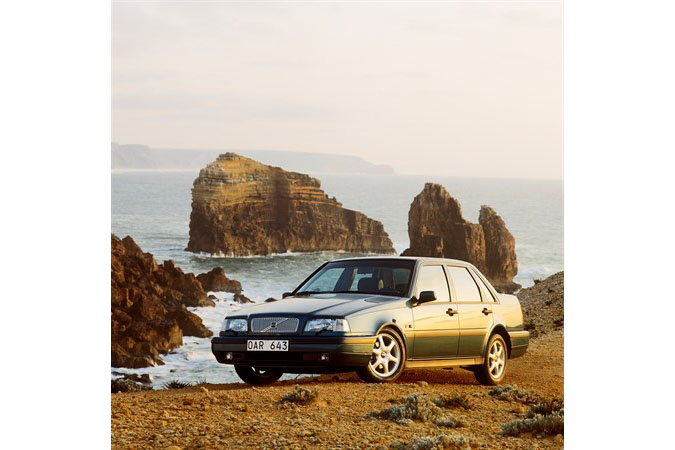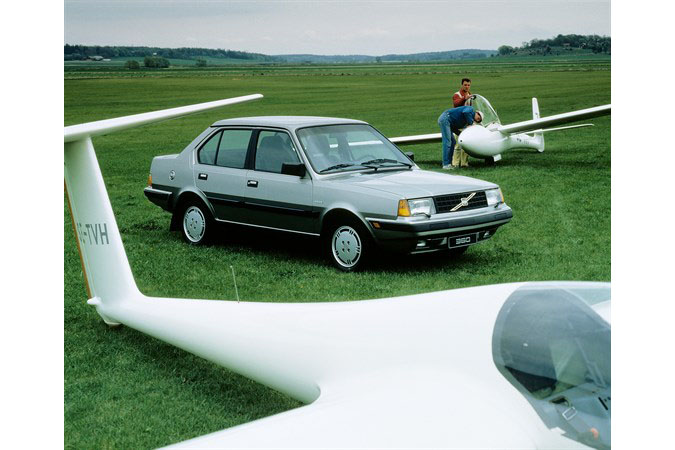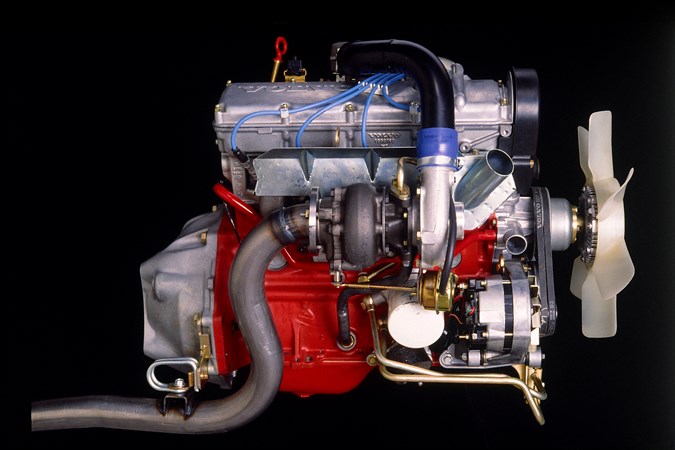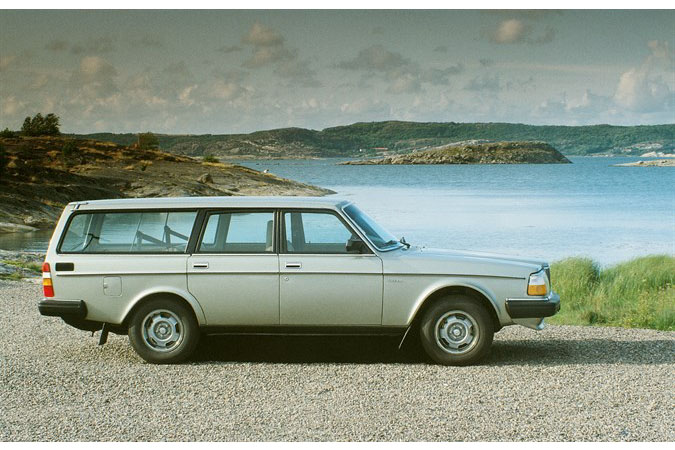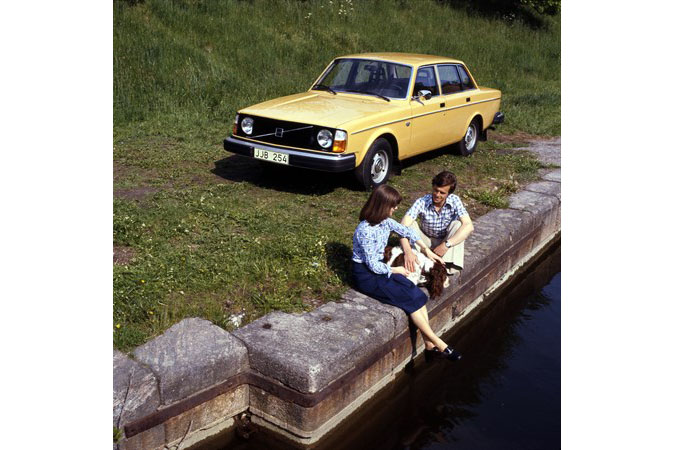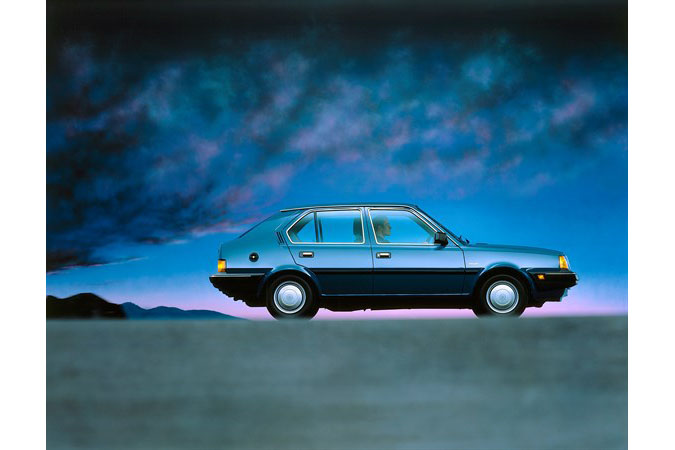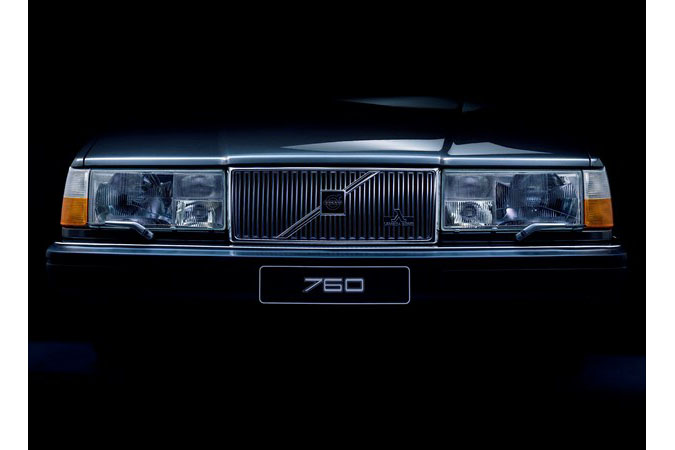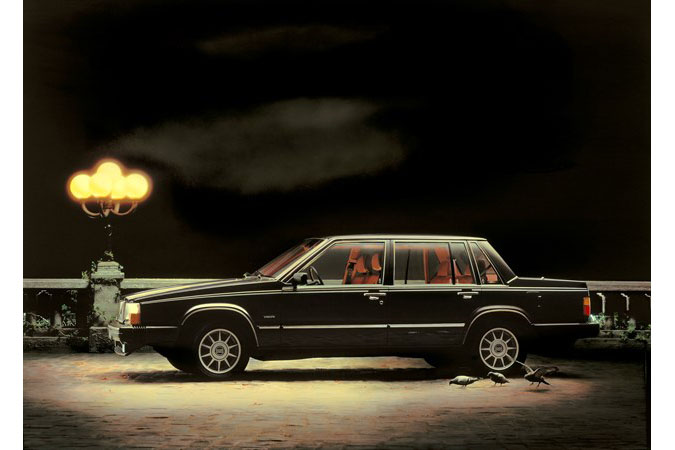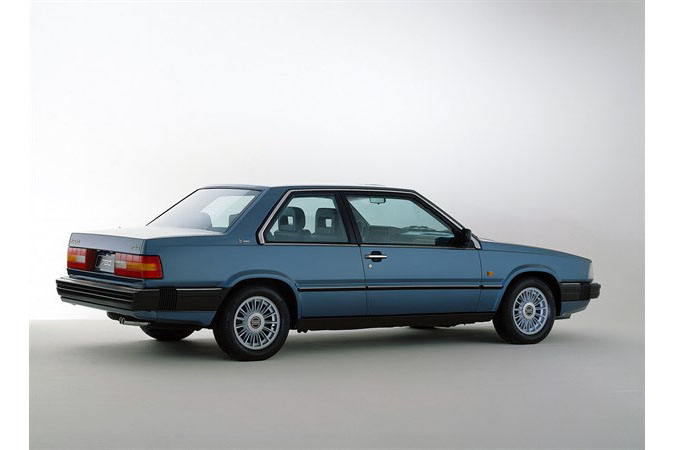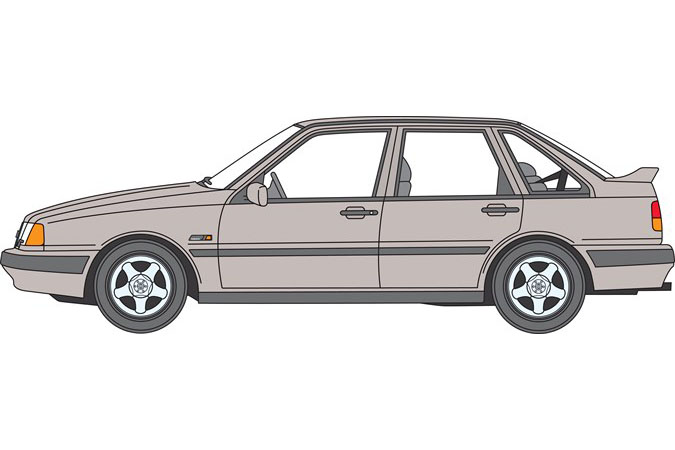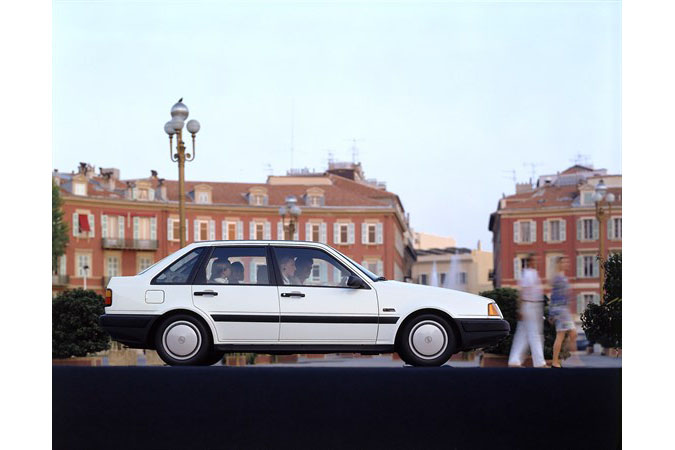

History of the Volvo Car
The 1980's
1980 - the first turbocharged Volvo car - the Volvo 240 Turbo. Volvo Concept Car (VCC) to test the technical solutions in the fields of energy and the environment. 1981 - the one-millionth Volvo bound for North America left the assembly line at the plant in Gothenburg. This jubilee car was a silver 240 estate. 1982 - Volvo unveiled its new model, the Volvo 760. 1983 - Volvo presented a project for the future - the LCP 2000 (Light Component Project). 1984 - new addition to the 700 Series, the Volvo 740. 1985 - Volvo 780, Volvo 480 ES, Volvo 740/760 Estates. 1986 - an environmental success wthen engines with catalytic converters and the Lambda Sond were introduced. This year was a series of safety accessories for children in cars introuduced. 1987 - A microprocessor-controlled climate unit known as ECC (Electronic Climate Control) was introduced. Driving characteristics were further improved with Volvo Multilink. 1988 - The Volvo 440 was introduced - an important new feature in the intermediate class and developed by Volvo Car B.V. in Holland. 1989 - The Experimental Safety Vehicle Conference was held in Gothenburg for the first time. Volvo's contribution, which included side-collision protection and a child booster cushion integrated into the rear seat of the car, attracted much attention.
1980
The first turbocharged car from the Volvo Car Corporation! The Volvo 240 Turbo with a B21ET engine developing 155 hp was a true performance model with the sort of driving characteristics people expect of a sports car. All the petrol engines were modified to reduce fuel consumption and improve output. A 2-litre engine, the B19A, with an output of 95 hp was introduced in the 340 Series as an alternative. During the year a new experimental vehicle, the VCC, Volvo Concept Car, was presented. This car was built in order to test new car concepts and technical solutions in the fields of energy and the environment. It was equipped with monitors instead of the traditional dashboard, for example. The automobile industry in general had a difficult year. The demand for new cars in the Western World, including Japan, fell during the year by some 2.4 million cars to just under 30 million. Even so, Volvo retained its share of a declining total market. Some markets even reported increases - they included the US, Great Britain and Italy.
1981
On February 25th, 1981, the one-millionth Volvo bound for North America left the assembly line at the plant in Gothenburg. This jubilee car was a silver estate. Volvo was now the largest European car exporter to the US. The big news in 1981 was that the front of the 340 Series was modified and extended and featured an integrated spoiler. The grille was changed and the headlights had larger reflectors. The new front meant that the 340 model now resembled Volvo's larger models more closely. During the year the Dutch state increased its holding in Volvo Car B.V. to 70% so that Volvo now held just 30%.
1982
On February 2nd, 1982 Volvo unveiled its new model, the Volvo 760. This new and exclusive car was shown at press conferences which were held simultaneously all over Europe. In terms of styling, quality and safety this was a car in keeping with the times. The 760 was introduced with two different engines - the 6cylinder B28E petrol engine and a new turbocharged 6-cylinder diesel, the TD24. With the TD24 the Volvo 760 GLE accelerated from 0 to 100 kph in 13 seconds, which made it one of the world's fastest diesel-powered cars. The Dutch 300 Series also included a number of new features in the interior and dashboard, but the big news was the 360 GLT with the wellknown B19E 2-litre engine, which was also equipped with a computerised fuel injection system. In October the Olofstrom Plant had supplied Volvo with pressed steel components for 5 million vehicle bodies. Most of these were car bodies, but the Olofskom Plant had also been supplying body components for trucks, buses and other special vehicles since the start in 1927.
1983
In 1983 it was obvious that Volvo's three model series made up an ideal range. Al though the automobile market suffered a general recession, Volvo sales rose on virtually every market. In one year production rose by 54,000 cars to reach a new record level of 372,400 cars. The 760 GLE was now available with a 2.3-litre turbo engine. The 240 Series was extended to include an estate with a turbocharged engine which provided the same speed resources, driving pleasure and comfort as the saloon model. A saloon model with improved aerodynamics was also added to the Volvo 300 Series. The performance model in the 300 Series, the 360 GLT, was equipped with a new, powerful engine which accelerated from O to 100 kph in 10.5 seconds. Volvo presented a project for the future - the LCP 2000 (Light Component Project). These four experimental cars aroused international interest as a result of the materials they incorporated, their design and low fuel consumption.
1984
Time for another important new addition to the 700 Series, the Volvo 740. The first two models, the GLE and the Turbo, added strength to the Volvo programme. The Volvo 740 was equipped with a low-friction engine. The Volvo 740 GLE had a four-cylinder, 2.3-litre engine with a breakerless ignition system. The Volvo 740 Turbo had a very powerful 2.3-litre engine with an output of 182 hp DIN turbocharged and equipped with an Intercooler. The Volvo 740 was also presented in a diesel version with a 6-cylinder, 2.4-litre engine. The strength and determination of the Volvo Car Corporation was further underlined by a comprehensive investment programme of 20,000 million Swedish kronor for the remainder of the 1980's. At the year end 1983/84 a new President was appointed at the Volvo Car Corporation. Roger Holtback succeeded Hakan Frisinger, who became President of AB Volvo.
1985
A year filled with exciting automobile news. The Volvo 780 - a new exclusive 2-door to top the model programme and developed in collaboration with Carrozzeria Bertone in Turin in Italy - was presented at the Geneva Motor Show. Volvo Car B.V. from Holland presented the Volvo 480 ES, a four-seater with sporty styling. A new generation of estates, the Volvo 740/760 Estates, was introduced. Volvo now had estates to match all its saloons - from the Volvo 740 GL Estate to the exclusive 760 GLE Estate. Sales and production both continued to rise for the sixth year in succession and totalled almost 400,000 cars. During the year Volvo began planning a new car plant in Uddevalla, some 80 kilometres north-west of the Volvo plants in Gothenburg. Volvo's European plant in Ghent in Belgium celebrated its 20th anniversary.
1986
Engines with catalytic converters and the Lambda Sond were introduced in a number of European countries. Other engine news included a new V6 the B280 - and large-scale changes to the B230K. A microprocessor-controlled ignition system produced improved performance and reduced fuel consumption. Great success for Volvo! The company passed the 100,000 mark with a vengeance: 117,000 estates were produced in 1986. Since 1980 Volvo's production of estates had more than doubled and Volvo was now by far the largest producer of estates in its size class. Volvo introduced a series of safety accessories for children in cars - they included a detachable seat for children of up to four years of age. The Volvo Traffic Safety Award - an award of 500,000 Swedish kronor - was presented for the first time. During the year the Volvo Car Corporation opened an advanced wind tunnel, in which tests at wind speeds of up to 200 kph can be simulated. A centre for the communications technology of the future was also inaugurated.
1987
A new Volvo 760. The most noticeable exterior feature was the softer lines of the front of the car. Driving characteristics were further improved as a result of the split rear axle, the Volvo Multilink. A microprocessor-controlled climate unit known as ECC (Electronic Climate Control) was also introduced. A sunroof, automatic level control, power window lifts, power rearview mirrors and a central lock were all standard fittings on this 760 model. The production of the Volvo 760 was concentrated at the Kalmar Plant. The Volvo 780 was also equipped with the new rear axle and climate unit. Anti-locking brakes (ABS) were available on both the Volvo 740 and the Volvo 480 as an optional extra. The Volvo 480 was equipped with a catalytic converter and was also introduced in a turbo version. The Volvo 340/360 was also available with catalytic exhaust emission control. Power steering and air conditioning were additional options on the Volvo 360.
1988
The Volvo 440 - an important new feature in the intermediate class and developed by Volvo Car B.V. in Holland. Its roadholding and safety in particular were acclaimed by the press, as was the generous amount of space inside the car. A "lively" newcomer was presented at the Geneva Motor Show - the Volvo 740 GLT with a newly-developed 16-valve engine, an output of 159 hp and a catalytic converter. A three-week long strike in Sweden meant that production fell for the first time in the 1980's and totalled slightly more than 400,000 cars. The new assembly plant in Uddevalla was completed. Large-scale conversion work began at the Torslanda Plant and a start was made on a new paintshop.
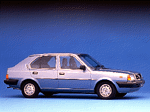
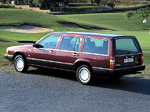
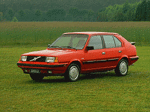
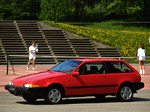
Legal | Privacy | Contact Us | Search | Site Map
Volvo Owners' Club Limited® 1962-2026


